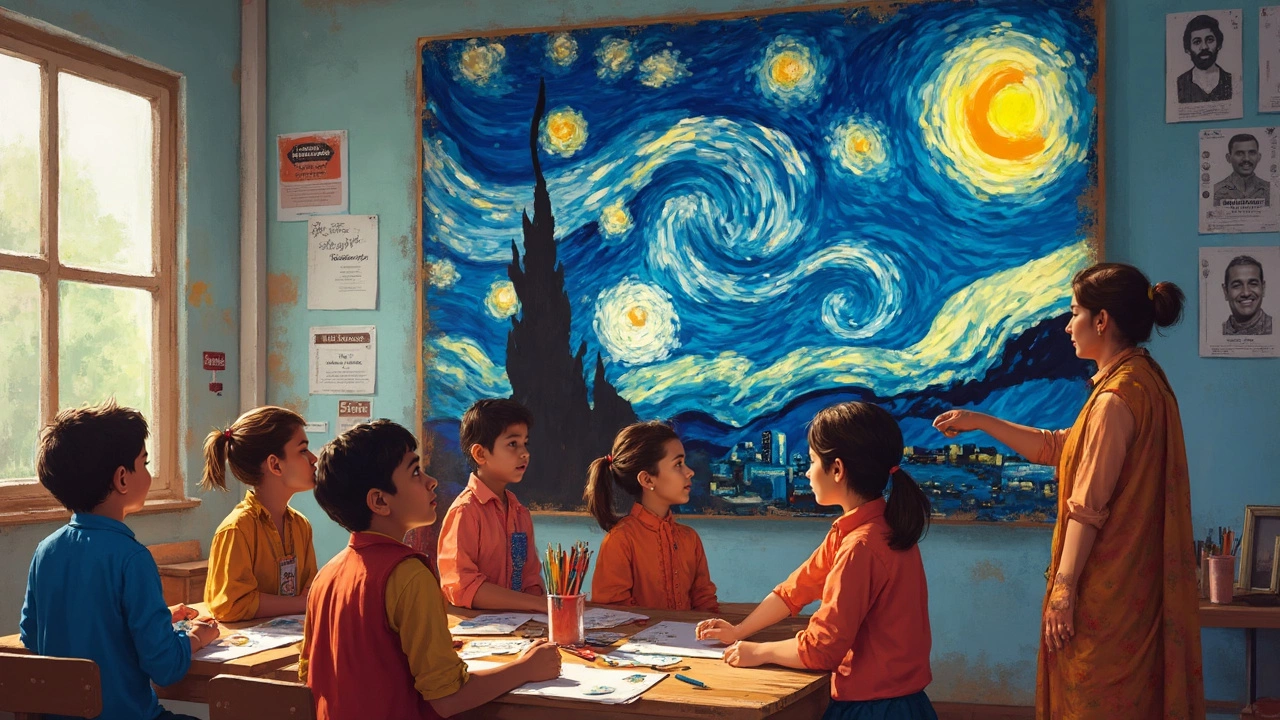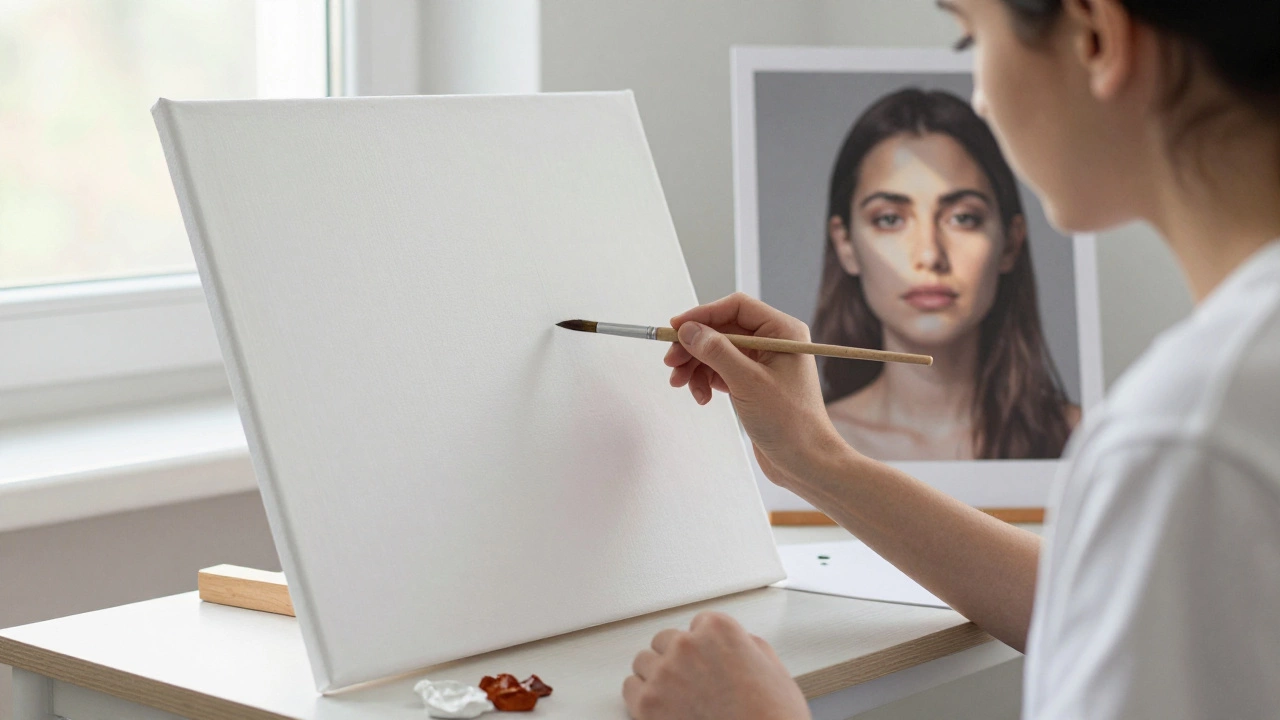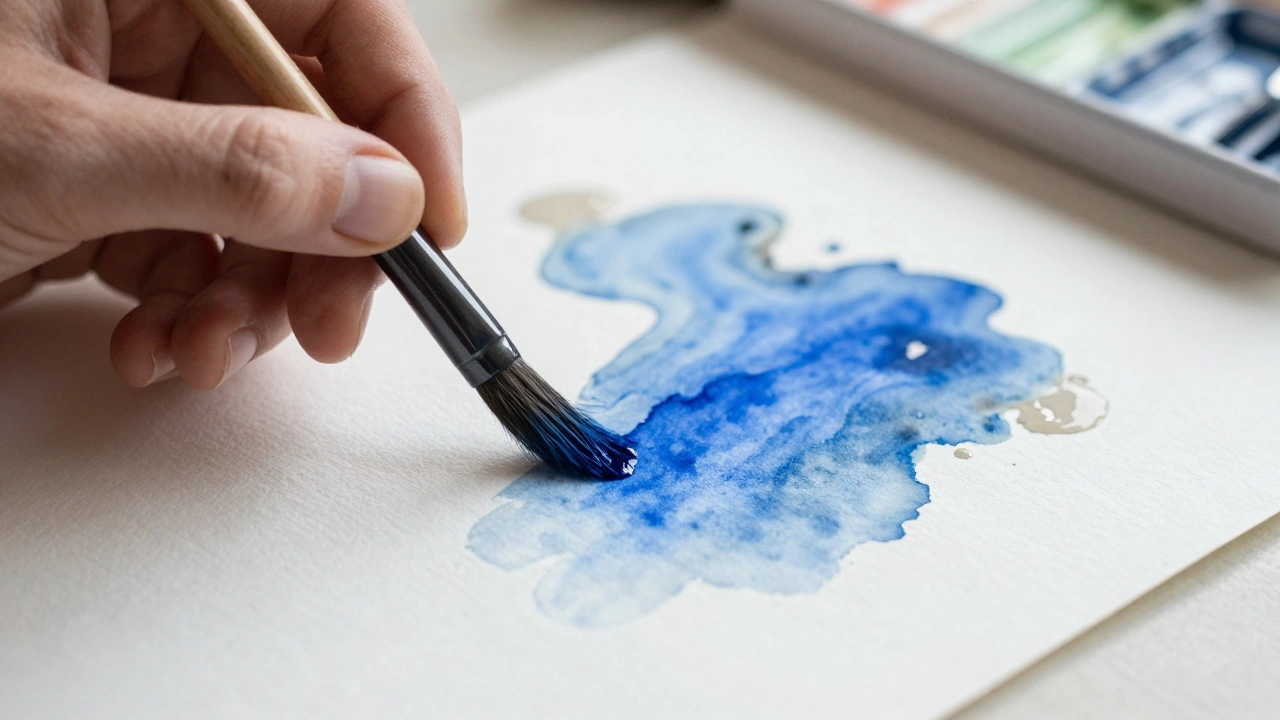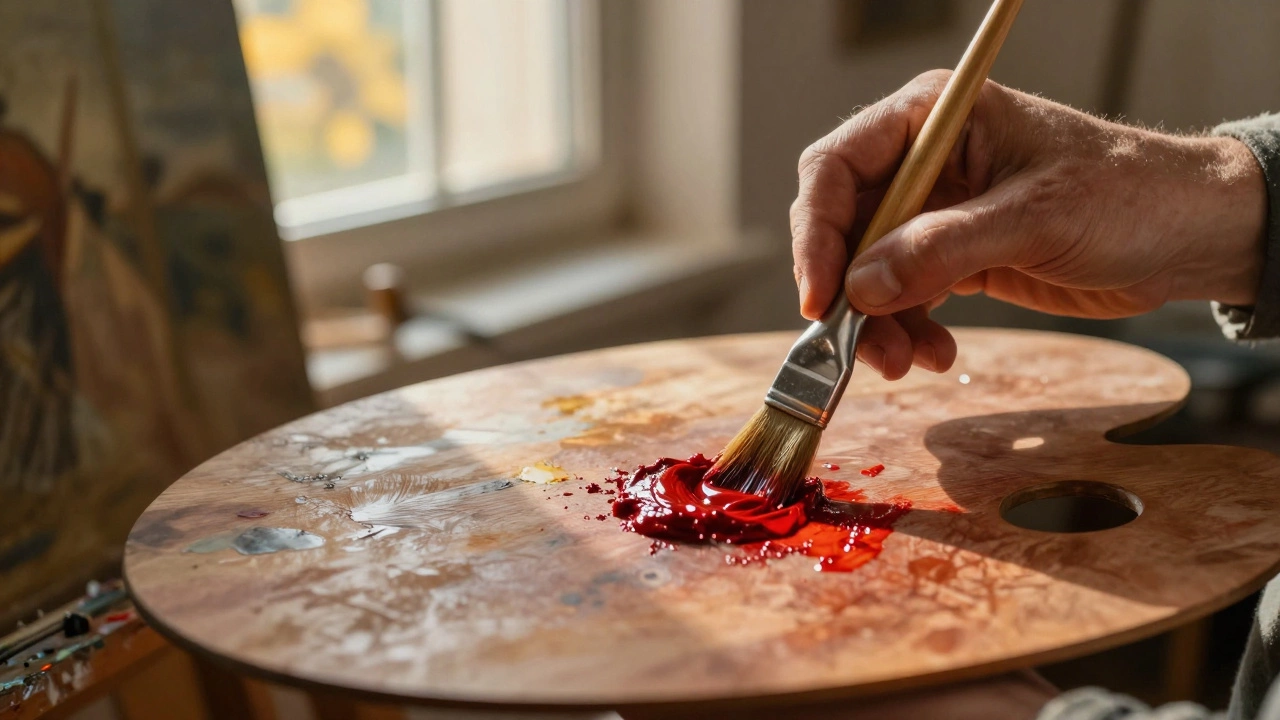Stand in front of Van Gogh’s Starry Night, and most people instantly feel it’s modern. But is it really? Turns out, this is one of the most common arguments in any art museum—right up there with which way to read the labels. The answer actually depends on what you mean by “modern art”. The term gets tossed around like it’s obvious, but the truth is way messier.
If you’ve ever left a museum wondering what counts as modern, you’re not alone. Even art teachers pull out charts, argue at dinner parties (my spouse Nathaniel loves these debates), and change their minds after reading some new article. Let’s clear things up and help you see “Starry Night” and modern art with a sharper eye.
- What Makes Art ‘Modern’?
- Where Does Starry Night Fit in History?
- Post-Impressionism: More Than Pretty Colors
- Why Starry Night Gets Called Modern Art
- Museum Labels vs. What People Say
- Tips for Spotting Modern Art in the Wild
What Makes Art ‘Modern’?
Let’s get real—the label modern art doesn’t just mean anything made recently. In art history, “modern” points to a specific time and attitude. Most experts agree modern art started in the mid-1800s and ran through about the 1960s. The biggest deal? Modern artists broke away from old rules that focused on perfect realism, tradition, and copying nature. They wanted art to feel fresh, personal, and, honestly, pretty rebellious for their day.
Here’s the practical checklist historians use when calling art “modern”:
- It questions the old ways of making art.
- It shows the world from a new or individual point of view.
- It plays with new materials or styles—not just pretty landscapes or realistic portraits.
- The artist cares more about ideas and feelings than pleasing everyone.
- It’s often linked to city life, changes in technology, and new ways of seeing the world.
Van Gogh and his peers didn’t want to paint like their parents did. They focused on bold color, weird brushwork, and bringing emotion to the surface. Paintings started to look less like photographs and more like dreams, memories, or outbursts. That shift is what marks something as “modern.”
Here’s a quick table for reference if you get these eras mixed up:
| Art Style | Typical Time | Key Focus |
|---|---|---|
| Classical & Renaissance | 1400s–1800s | Realism, tradition |
| Modern Art | 1850s–1960s | Experiment, personal vision |
| Contemporary Art | 1970s–now | Mix of styles, technology, world issues |
So next time someone calls a new-looking painting “modern art,” you’ll know to double-check if it’s new or actually fits into that modern art era. The key is seeing if the art breaks away from tradition and looks at the world differently. That’s at the heart of modern art—and exactly why you hear Starry Night get dragged into this debate so often.
Where Does Starry Night Fit in History?
When people argue if Starry Night is modern art, it helps to pin down its place on the art timeline. Van Gogh painted it in June 1889 while at an asylum in Saint-Rémy-de-Provence, France. Art history folks call this era the tail end of the 19th century. That date puts it before a lot of what most museums label as straight-up modern art. But it’s not exactly old-school either—it’s not in the same category as Renaissance or Baroque paintings.
Starry Night is part of something called post-impressionism, which came right after impressionism (think Monet’s watery gardens and blurred sunsets). Post-impressionist artists, like Van Gogh and Gauguin, took those light brushstrokes and colors and amped up the emotion and personal style. They didn’t just try to copy what they saw with their eyes—they painted how stuff felt.
The late 1800s were a weird in-between time. Cameras had already started replacing painting for "realistic" pictures, so artists felt free to get creative. The art world was about to bust open with new movements: fauvism, cubism, surrealism, and so on. Van Gogh dies in 1890—right before the big "modern" movements kick off. But his work helped inspire them.
Want some actual art timeline comparisons? Check this out:
| Painting/Movement | Year |
|---|---|
| Starry Night (Van Gogh) | 1889 |
| Les Demoiselles d'Avignon (Picasso) | 1907 |
| Impression, Sunrise (Monet) | 1872 |
| Campbell's Soup Cans (Warhol) | 1962 |
So, Starry Night lands after the "classic" period, after impressionism, but before all the wild, rule-breaking stuff most people imagine when they hear "modern art." It’s practically the bridge from the old world to the new. No wonder there’s so much debate!
Post-Impressionism: More Than Pretty Colors
Let’s get one thing straight—Starry Night isn’t just eye candy. It sits right in the thick of post-impressionism, which came right after the impressionist movement. While impressionists like Monet chased the shimmer of light and quick brushstrokes, post-impressionists aimed for something deeper. They wanted their art to mean more, not just look pretty.
Vincent van Gogh painted Starry Night in 1889, one year before his death. He and other post-impressionists (like Gauguin and Cézanne) experimented with color, form, and emotion. The bold, swirling sky isn’t just for show—it’s a way to toss out reality and let feelings take over. This was a big step between traditional and what we now call modern art.
Here’s what made post-impressionism stand out from what came before:
- Colors were bolder and used for mood, not realism. That’s why nothing in Starry Night looks exactly like the real world.
- Artists used thick paint. Van Gogh’s brushstrokes are so chunky you can almost see how he moved his arm.
- They cared about what they were feeling more than copying what they saw. Starry Night is basically Van Gogh’s mental state painted for everyone to see.
- Shapes sometimes got wonky or exaggerated for effect, which you can spot in the rolling hills and twisted trees.
The term “post-impressionism” might sound like academic nitpicking, but it helps explain why this painting leads right into what we now call modern art. Museums slide Starry Night into the post-impressionist section, but those boundaries blur fast once you compare it to true modern pieces of the early 1900s.
| Impressionism | Post-Impressionism |
|---|---|
| Based on light and realistic scenes | Bolder colors, more personal meaning |
| Quick brushstrokes | Thick paint, dramatic strokes |
| Soft outlines | Stronger shapes, sometimes abstract |
If you remember just one thing: post-impressionism, “Starry Night” included, opened the door so modern artists could stop worrying about copy-pasting reality. This shifted the game for not just what painters made, but how we see art history itself.

Why Starry Night Gets Called Modern Art
So, why do museums and people keep calling Starry Night modern art, even if Vincent van Gogh painted it back in 1889? The answer is all about the rules the painting broke. Up until the late 1800s, art was about getting things to look realistic: smooth brushwork, soft lighting, and nothing too wild or emotional. Van Gogh, though, did the opposite.
First up, look at those brush strokes in Starry Night—they’re bold, swirling, almost sculpted onto the canvas. Van Gogh wasn’t hiding his hand at all. That in-your-face style goes against everything that classic art teachers used to drill into their students. The colors are another giveaway. Instead of sticking to what the sky or village “should” look like, he turns the night bright blue and yellow. It’s more about how things feel, not just how they look.
Plus, Van Gogh painted at a time when the art world was flipping upside down. Artists started to care more about what was inside their heads and hearts than what was strictly in front of them. This was huge—it’s exactly why Starry Night helps set up what we call modern art, even though the “modern” period officially kicked off a bit later.
- Emotion over Realism: Van Gogh’s sky doesn’t look like any real night sky. It’s packed with movement and emotion.
- Visible Brushwork: You see every mark. Earlier artists blended everything so you couldn’t tell.
- Inventive Color: The stars and hills aren’t colored how you’d see them in real life—they’re the colors Van Gogh felt.
- Personal Style: No one else painted this way at the time. This kind of personal fingerprint is a big deal in modern art.
If this all sounds a little technical, here’s something practical: check the wall text the next time you visit a museum. Most will stick Starry Night in a section with “Modern Art” plastered right on the sign. The reason? Van Gogh started a domino effect—artists after him went even further, and suddenly, the rules of art got a lot looser. Without paintings like this, modern art as we know it would look totally different today.
| Feature | Classic Art | Starry Night |
|---|---|---|
| Brush Strokes | Blended, hidden | Thick, visible |
| Color | Naturalistic | Expressive, bold |
| Emotion | Subtle | Powerful, personal |
When you hear people say Starry Night is modern art, they mean it rewrote the rules—making it less about perfect copies of reality, and more about what the artist feels. That’s modern art in a nutshell.
Museum Labels vs. What People Say
If you've wandered through a big museum, like MoMA in New York or the Musée d'Orsay in Paris, you’ve probably noticed that Starry Night often gets grouped with something called “Post-Impressionism.” That’s the official museum label. Most museums are careful with their language; they want to be as accurate—and as safe—as possible. They usually stick to terms like “Impressionist,” “Post-Impressionist,” “Modern,” and “Contemporary,” but these don’t always mean what people at home think.
Here’s the twist: For a lot of regular folks, anything from the 1800s that isn’t a strict portrait or a bowl of fruit seems modern. People call Starry Night modern art all the time, even though experts place it at the tail end of the 19th century, right before true “modern art” takes off.
Let’s check out how some official sources label Van Gogh’s work compared to what people usually call it:
| Source | Label for Starry Night |
|---|---|
| MoMA, New York | Post-Impressionism |
| Musée d'Orsay, Paris | Post-Impressionism |
| Popular Opinion (Social Media) | Modern Art |
| Textbooks (high school) | Modern Art, Post-Impressionism |
This confusion partly comes from how the word “modern” has changed. In art schools, “modern” means something from around the 1860s to the 1970s, covering big shifts like Cubism, Dada, and Abstract Expressionism—not just bright colors and swirly skies. But if you ask your aunt, she might simply call anything non-traditional “modern.”
Why does this matter? Well, if you’re trying to understand art—or just not look lost during a gallery visit—knowing what the label means helps. Museums give the history, but everyday folks go by what feels new or different to them. Neither is wrong. It just depends on whether you want to sound like an art scholar or fit in at your next family dinner.
Tips for Spotting Modern Art in the Wild
It’s easy to get turned around when walking through a museum—one room is full of fancy portraits, the next has wild shapes nobody can explain. So how do you actually spot modern art when you see it? Here are a few clues you can use (and yes, these even work outside big museums).
- Look for a break with tradition. Classic paintings before the 1900s usually aimed for realism—think portraits and landscapes that feel like windows. Modern art often pushes past that, using bold colors, strange shapes, or new techniques.
- Check the date. Most experts say "modern art" covers roughly 1860 to the late 1960s. If you see a date in that range, you’re likely in the right zone. For reference, Starry Night was painted in 1889—right in that sweet spot.
- Subject gets weird, or really personal. Modern artists weren’t just showing what the world looked like; they wanted to show how it felt or make you think. Watch for art that seems more about mood, emotion, or even politics than just a pretty scene.
- New materials and wild experiments. Oil paint is classic, but modern artists started using all sorts of stuff—collage, metal, even bits of trash. If you spot a newspaper glued to a canvas, you’re likely looking at modern art or one of its offshoots.
- No clear story? That’s often a clue. Earlier art usually told stories from religion or mythology. Modern art might show a single chair, a swirl of paint, or just bold color fields—without a clear explanation.
Here’s a quick cheat sheet, so you don't have to memorize awkward labels:
| Feature | Modern Art | Traditional Art |
|---|---|---|
| Time Period | 1860s–1960s | Before 1860s |
| Main Focus | Emotion, experiment | Realism, storytelling |
| Subjects | Everyday life, feelings, abstract | Religion, royalty, myth |
| Materials | Paint, collage, mixed materials | Paint, sculpture |
| Rules | Break them | Follow them |
If you’re ever not sure, look up the year, squint at the label, or just ask a staff person (they seriously love when people ask about this). Next time you see a colorful swirl or odd arrangement of shapes, remember these clues and you’ll sound like an expert. Knowing a bit about Van Gogh and the post-impressionism label gives you extra cred—especially if someone tries to argue whether Starry Night is truly modern art or not.





